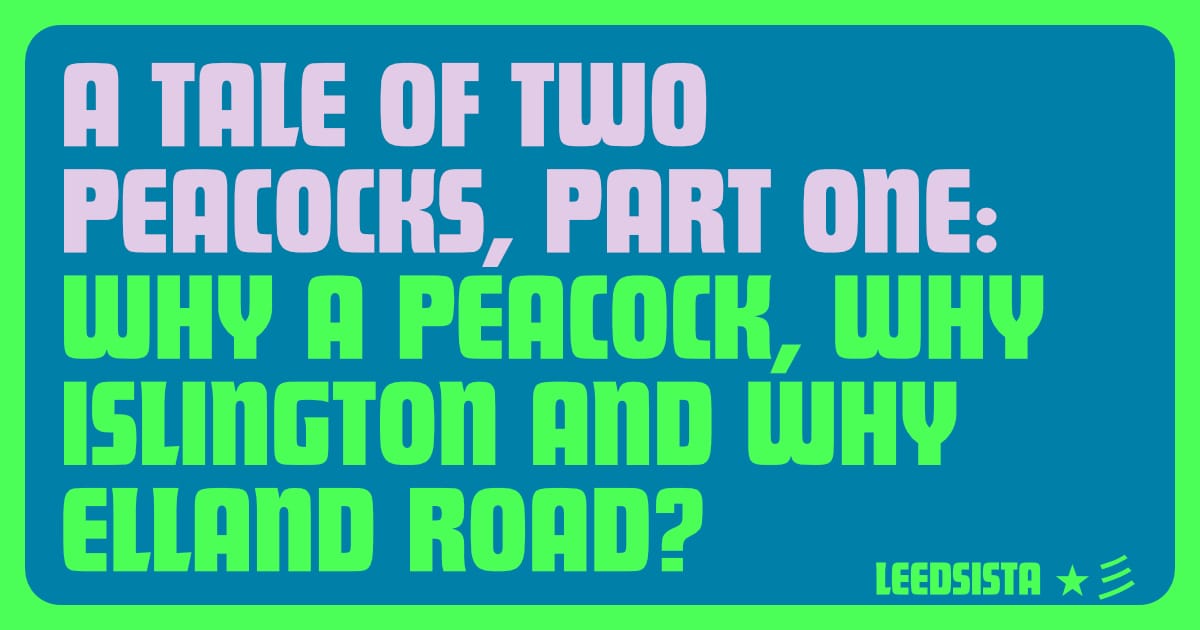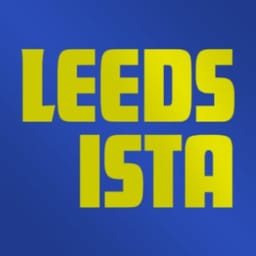A tale of two Peacocks, part two: a new peacock unfurls its tail
200 yards from the Peacock Inn on Elland Road, a new pub was opening: it was called The Prince George, but not for long. Who was behind The New Peacock, and what was their connection to The Old Peacock?
In part one of this historical meander, I looked at the origins of The Peacock Inn and the Leeds & Ealand Turnpike Road diversion of the 1820s. It's much more interesting than that sounds! And you can go back to read that here. That article explained the naming of the pub and its surroundings — Islington, Beeston — and now we've got its doors open, let's look at why it gained a sibling: The New Peacock.

(This was part one, in case you missed it)
Surviving photographs of The Peacock Inn tend to show it glancingly, from odd angles, that don't reveal the whole building (see here or here). But The Peacock's first appearances on maps of Leeds make it seem a substantial structure. When it came up for sale in the 1890s, the particulars gave a full description:
The inn ... contains passage, sitting-room, tap-room, filling-bar, kitchens, and pantry on the ground floor; a lodge room 42ft 6in by 14ft, and 4 bedrooms on the first floor; 2 attic-bedrooms, hop-room, &c on the second floor; and ample cellarage: and the out-buildings include ample accommodation for horses and cows, brewhouse, mistal, piggery, and other convenience (and) Sufficient land at the back for a bowling green
It is so directly upon the new, straight Elland Road that it must have been built as part of the same project or very soon after. A well is marked in a large, landscaped plot to the rear, where the bowling green could have been and the beer garden is now. The fields around are still stocked with sheep — one was soon reported stolen — and clear of the coal and brick-clay mines that would come in the second part of the century (Mindat records the 'Peacock Pit' as opening in 1861).
The Peacock Inn was definitely open by 1827, when Mr Joseph Croft fell victim to highway robbers, 'on the new road leading from Meadow-lane to Churwell, about 300 yards beyond the Peacock Inn'. The first known licensee was William Bradley, formerly of the The White Hart, which was still his house in 1826; by 1829 he has The Peacock and John Sims has The White Hart. A Mr Samuel Blackburn has The Unicorn.
We can surmise a little here, that William Bradley was following the trade. An experienced coaching house licensee at The White Hart on Town Street, along the old Ealand Road turnpike route through Beeston, he was able to transfer all that knowledge to the brand new Peacock Inn on the new road in Islington, and give his old customers the same warm welcome at the bottom of the hill that they used to get at the top. Trade seems to have gone along well, until 1837 anyway. Income from tolls increased by £450 a year on the Leeds & Ealand Turnpike, meaning plenty of custom for Willam Bradley.
William Bradley had a problem, though, because he didn't own The Peacock. In February 1835 the death was announced of Mr Joseph Heighington, 'after a long and tedious illness'. He had been a wine merchant in Leeds for more than 25 years, advertising such stock as 'his choice Madeira, Twenty Years Old (a particular Class of which he has the exclusive Sale); to such of his Friends as have Tasted it, it needs no Comment'. His business had been in the centre of Leeds, but in April the devisees of his will were offering, by auction, The Peacock Inn:
TO INNKEEPERS.
Peacock Inn, Islington, near Leeds.
To be SOLD by AUCTION, at the House of Mr. William Bradley, the Peacock Inn. Islington, in the Township of Beeston, and Parish of Leeds, on Monday the Eighth Day of May next, at Seven O'Clock in the Evening precisely, by Order of the Devisees in Front of the late Mr. JOSEPH HEIGHINGTON, deceased, and subject to such Conditions as will be produced.
All that Valuable MESSUAGE or DWELLINGHOUSE, now and for several Years past occupied as an INN, and known by the sign of the Peacock, eligibly situated about a Mile from the Town of Leeds, and adjoining upon the King's Highway, leading from thence to Huddersfield, with an extensive Open Carriage Shed, Stabling for Ten Horses, a Brewhouse, and all other necessary and convenient Outbuildings, now in the Occupation of the said William Bradley.
And also, all those NINE several COITAGES or TENEMENTS, with the GARDEN or VACANT LAND, adjoining or near to the said Messuage, now in the Occupation of George Sharp, Widow Ismay, and others.
The Inn being situate upon so great a Public Thoroughfare, and in a populous Neighbourhood, is well calculated to command an extensive Business, and the Estate will be found a desirable investment for either a Brewer, Maltster, or Capitalist.
Mr. WILLIAM BRADLEY will shew the Estate.
The purchaser was a Mr Thomas Holliday, presumably the same who ran The Old White Hart — the one on Call Lane, that is, not Beeston. Apparently Holliday made an offer to William Bradley of continuing as his tenant. We know that Bradley was still running The Peacock in December 1835 as that's the address given alongside the death announcement of his eldest daughter, Mary, in her nineteenth year.
To keep reading, please become a More to Read member
Leedsista is supported by Leeds fans who think decent writing about their football team is worth £3 a month.
